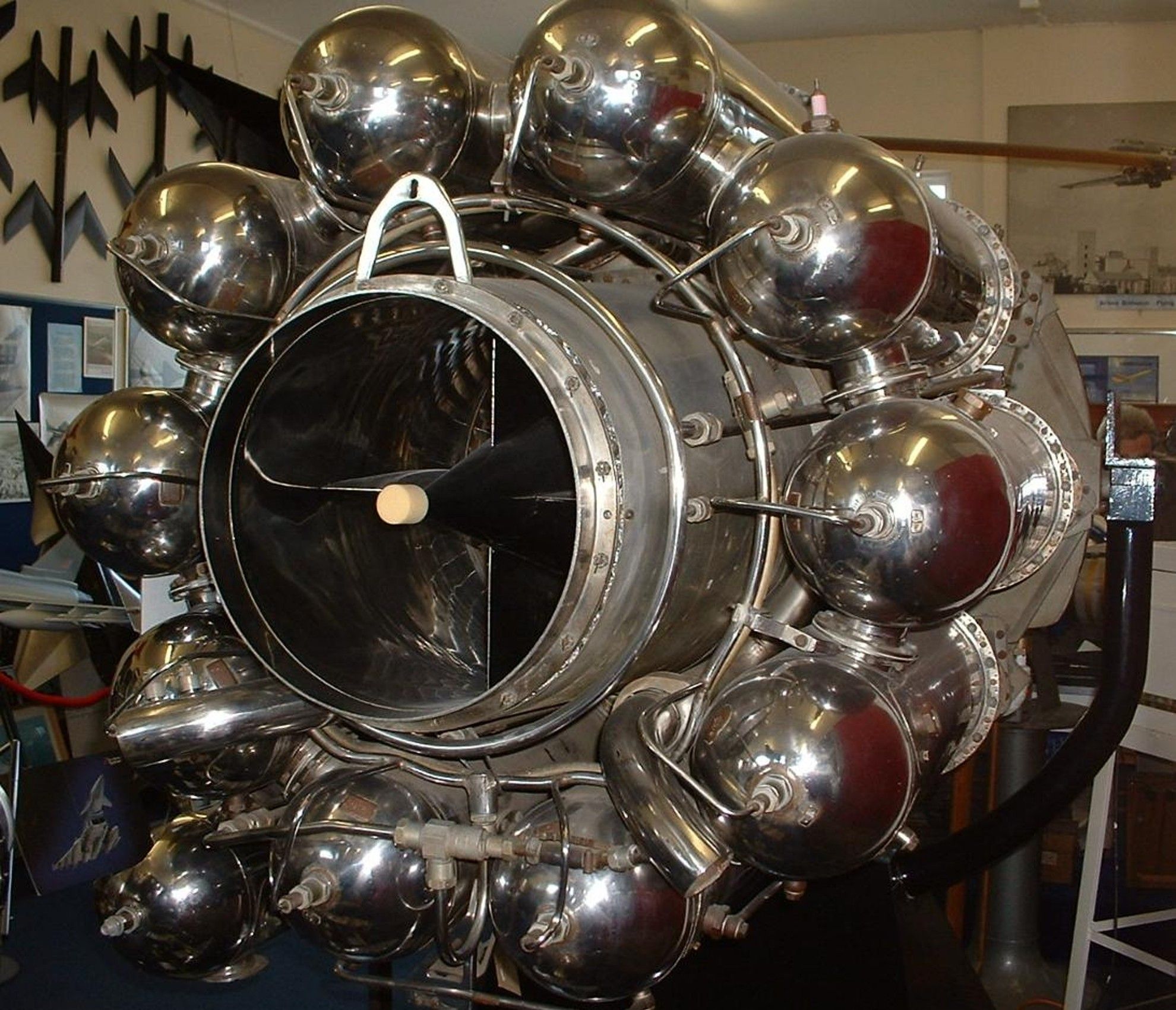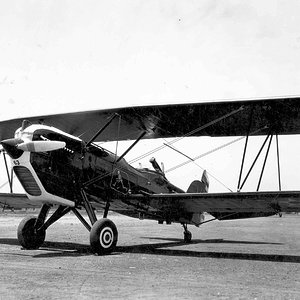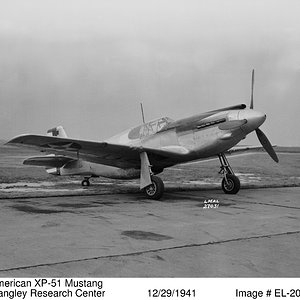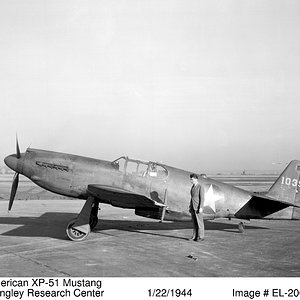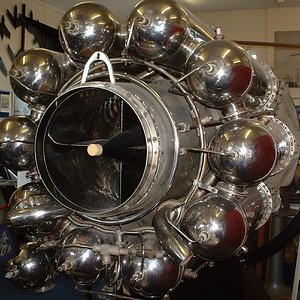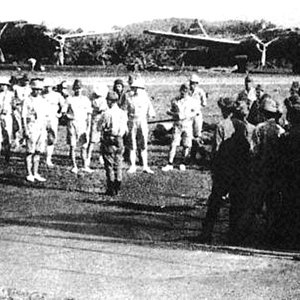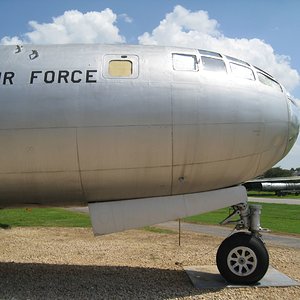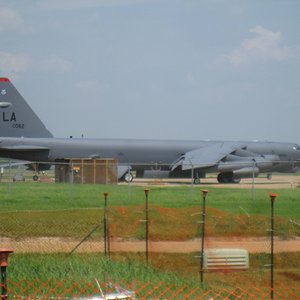Navigation
Install the app
How to install the app on iOS
Follow along with the video below to see how to install our site as a web app on your home screen.
Note: This feature may not be available in some browsers.
More options
You are using an out of date browser. It may not display this or other websites correctly.
You should upgrade or use an alternative browser.
You should upgrade or use an alternative browser.
Paradoxically, Power Jets is perhaps the least well known but most important British jet engine manufacturer. Power Jets was the company formed by Frank Whittle to develop his pioneering jet engine designs. Incorporated in March 1936, Power Jets comprised of Whittle, his friends Williams and Tinling who were to have a 49 percent share in the new company, and investment bankers Falk & Co. who held a 51 percent share.
The Air Ministry agreed to allow Whittle to hold shares and take an active part in Power Jets even though he was still a serving RAF officer. Whittle needed an established engineering company to manufacturer the components for his engine and also facilities for testing the engine.
A contract was signed with British Thomson Houston (BTH) of Rugby who had experience in the field of steam turbines. This was not a marriage made in heaven and the relationship between Whittle and BTH was always strained and often acrimonious. Work began on Power Jets first engine the WU or Whittle unit.
The WU made history when on 12 of August 1937 it became the world's first working jet engine. Initial tests were plagued with control problems due to combustion difficulties but the engine became more reliable later on. The engine had to be repaired several times and suffered from general degradation but lack of funding meant that it had to continue running for another three years.
In July 1939, Power Jets received a contract to build a flight engine which was designated the W.1 and later that year the company received a further contract to build a more powerful engine which was to be known as the W.2.
The designation of the Power Jets engines can be confusing but can be explained below:-
Click on Picture to enlarge
Power Jets WU (Worlds first working jet engine)
WU First experimental engine. Had three variants during its life.
W1 First flight engine. Flew in Gloster E.28/39 aircraft.
W1x Built from un-airworthy parts for test purposes.
W2 Intended to be second generation engine.
W2B Redesigned W2. Also flew in Gloster E.28/39 aircraft.
W2B Unfortunate nomenclature for BTH's engine which differed from the Power Jets W2B.
W2/500 Developed W2B, built by RR and know as the Welland.
W2/700 Final development of W2 series. Flew in Meteor but Derwent chosen in preference.
The successful flight of the E28/39, while being a triumph for Power Jets and a vindication of Frank Whittle's vision, determination and hard work also marked the start of Power Jets demise. As other established engine manufacturers saw that Whittle's engine was a success, they sought to take advantage of Power Jets size and the fact that it was headed by a serving RAF officer to make a case for limiting their activities. They argued that Power Jets lacked the experience to embark on large scale production of jet engines. The government were swayed by these arguments and Rover were given a contract for the large scale production of the W2B engine.
Rover breached the terms of the contract by making unauthorized modifications to the engine and giving it a new designation, the B26. Rover also made unauthorized copies of Power Jets drawings, deleting all reference to Power Jets and their patents in the proccess.
In December 1942 a deal was struck with between Rover and Rolls Royce which saw the latter take over production of the W2B. Previously, Power Jets had enjoyed a good relationship with Rolls Royce and although Power Jets wished to remain independant, it thought that a deal with Rolls Royce was preferable to one with Rover.
In April 1944 Power Jets were nationalized. Their role was limited to research and development and in January 1946 a disspirited Frank Whittle resigned from the company he had created some ten years earlier. Gradually, Power Jets was broken up with only a small part remaining to administer its patents.
The Air Ministry agreed to allow Whittle to hold shares and take an active part in Power Jets even though he was still a serving RAF officer. Whittle needed an established engineering company to manufacturer the components for his engine and also facilities for testing the engine.
A contract was signed with British Thomson Houston (BTH) of Rugby who had experience in the field of steam turbines. This was not a marriage made in heaven and the relationship between Whittle and BTH was always strained and often acrimonious. Work began on Power Jets first engine the WU or Whittle unit.
The WU made history when on 12 of August 1937 it became the world's first working jet engine. Initial tests were plagued with control problems due to combustion difficulties but the engine became more reliable later on. The engine had to be repaired several times and suffered from general degradation but lack of funding meant that it had to continue running for another three years.
In July 1939, Power Jets received a contract to build a flight engine which was designated the W.1 and later that year the company received a further contract to build a more powerful engine which was to be known as the W.2.
The designation of the Power Jets engines can be confusing but can be explained below:-
Click on Picture to enlarge
Power Jets WU (Worlds first working jet engine)
WU First experimental engine. Had three variants during its life.
W1 First flight engine. Flew in Gloster E.28/39 aircraft.
W1x Built from un-airworthy parts for test purposes.
W2 Intended to be second generation engine.
W2B Redesigned W2. Also flew in Gloster E.28/39 aircraft.
W2B Unfortunate nomenclature for BTH's engine which differed from the Power Jets W2B.
W2/500 Developed W2B, built by RR and know as the Welland.
W2/700 Final development of W2 series. Flew in Meteor but Derwent chosen in preference.
The successful flight of the E28/39, while being a triumph for Power Jets and a vindication of Frank Whittle's vision, determination and hard work also marked the start of Power Jets demise. As other established engine manufacturers saw that Whittle's engine was a success, they sought to take advantage of Power Jets size and the fact that it was headed by a serving RAF officer to make a case for limiting their activities. They argued that Power Jets lacked the experience to embark on large scale production of jet engines. The government were swayed by these arguments and Rover were given a contract for the large scale production of the W2B engine.
Rover breached the terms of the contract by making unauthorized modifications to the engine and giving it a new designation, the B26. Rover also made unauthorized copies of Power Jets drawings, deleting all reference to Power Jets and their patents in the proccess.
In December 1942 a deal was struck with between Rover and Rolls Royce which saw the latter take over production of the W2B. Previously, Power Jets had enjoyed a good relationship with Rolls Royce and although Power Jets wished to remain independant, it thought that a deal with Rolls Royce was preferable to one with Rover.
In April 1944 Power Jets were nationalized. Their role was limited to research and development and in January 1946 a disspirited Frank Whittle resigned from the company he had created some ten years earlier. Gradually, Power Jets was broken up with only a small part remaining to administer its patents.

